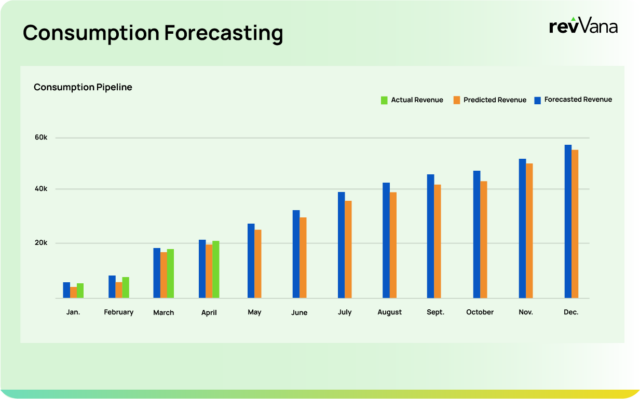As more companies adopt usage-based pricing models, managing renewals and forecasting consumption has become increasingly complex. These changes demand that organizations evolve how they track and manage revenue, shifting from traditional pipeline and booked deal management to focusing on usage and associated revenue. This shift is reshaping how businesses forecast renewals and plan for the future.
The Growing Shift Toward Usage-Based Models
Usage-based pricing is gaining traction across industries. According to Openview Partners, 61% of organizations have adopted or are experimenting with consumption models. This growing trend is reshaping the way businesses predict future revenue, as traditional methods focused on pipeline and booked deals are no longer sufficient. With consumption-based pricing, companies need to focus on real-time usage patterns to better understand revenue potential, particularly when it comes to renewals.
Forecasting Best Practices for Managing Renewals
- Model Consumption Business Rules
To forecast accurately, it’s important to understand how consumption varies over the entire customer lifecycle. This requires a bottom-up forecasting approach. Instead of focusing solely on sales, companies must account for how customers use their products over time, which may change as they ramp up or adjust their usage.
- Account for Unique Variables in Your Forecasting Models
Every customer and product has unique factors that influence usage, so it’s essential to model forecasts around specific customer segments. These variables can include different customer needs, use cases, and product types. Some customers may ramp usage quickly, while others may maintain steady usage throughout their lifecycle. Forecasts should reflect these differences to ensure they are as accurate as possible.
- Integrate Sales and Success Team Insights
Sales and customer success teams are directly engaged with customers and have valuable insights that can influence forecasting accuracy. By integrating this input with quantitative data, businesses can refine their forecasts and improve their ability to predict revenue. This collaboration ensures forecasts are grounded in both hard data and customer sentiment, helping companies navigate potential risks and opportunities.
- Leverage AI and Automation
AI and automation can significantly improve forecasting accuracy. By using AI to analyze usage patterns, businesses can gain a deeper understanding of customer behavior and make more informed decisions. Automation helps keep forecasts up to date, especially as usage data changes. This approach enhances forecasting without replacing the valuable input of sales and customer success teams.
- Segment and Layer Your Revenue Streams Appropriately
It’s important to clearly define and segment revenue streams to ensure accurate forecasts. Revenue should be categorized into new business, renewals, and ongoing run rate. Each revenue stream has different characteristics, so it’s crucial to forecast them separately to avoid missing or double-counting revenue. Clear segmentation helps keep renewals and consumption forecasts organized and accurate.

How revVana Helps Automate Renewals and Consumption Forecasting
revVana helps businesses forecast renewals by automating revenue forecasts throughout the entire revenue lifecycle. This includes integrating customer feedback, tracking usage patterns, and applying AI-driven scenarios to refine forecasts. By automating these processes, businesses can stay on top of usage changes and ensure that renewals are seamlessly integrated into the broader forecasting framework.
Forecasting Cadence Example:
- Pipeline Through Close: Weekly updates on usage and expected consumption.
- At Close: Baseline usage forecasts are created and continuously updated.
- Post-Close Ramp Period: Monthly adjustments are made as usage ramps up or down.
- Mature Accounts: Forecasts are refined quarterly or annually to capture long-term usage trends.
By continuously updating forecasts based on real-time data, businesses can ensure their renewal processes are accurately predicted, helping them plan more effectively for future revenue.
Managing renewals in a consumption-based pricing model requires a more nuanced approach than traditional subscription forecasting. By focusing on real-time usage patterns and integrating AI, automation, and team insights into forecasting processes, businesses can better manage renewals and predict future revenue. At revVana, we help organizations optimize their forecasting processes, providing the tools and insights needed to forecast renewals with precision and ensure long-term revenue growth.






